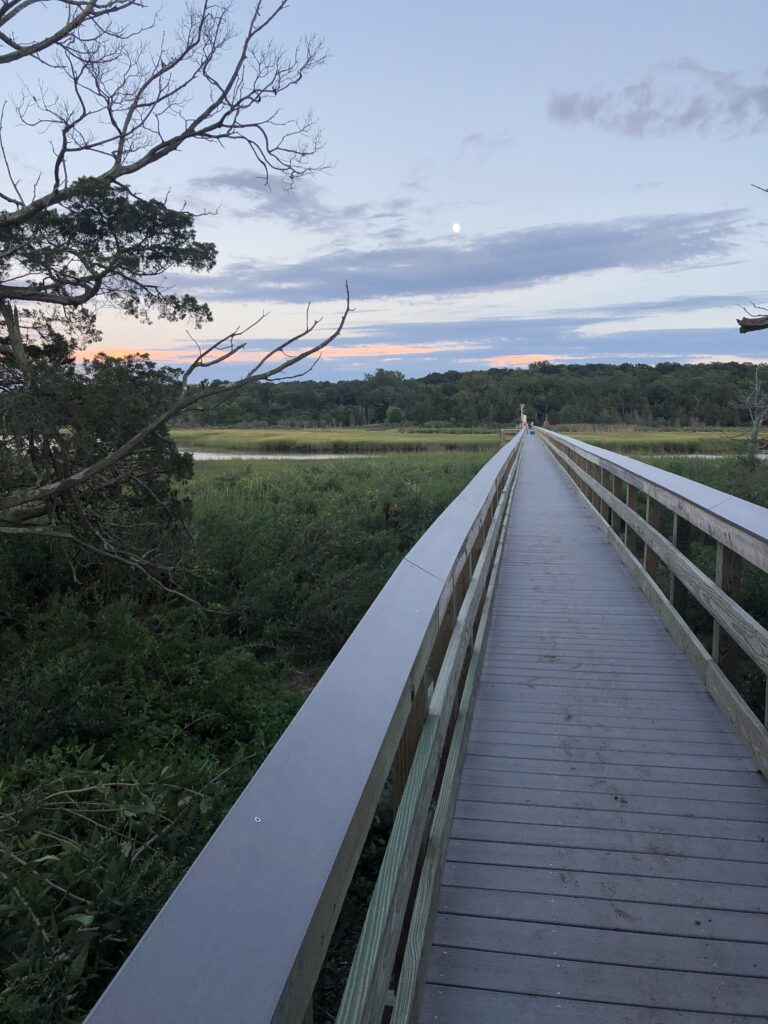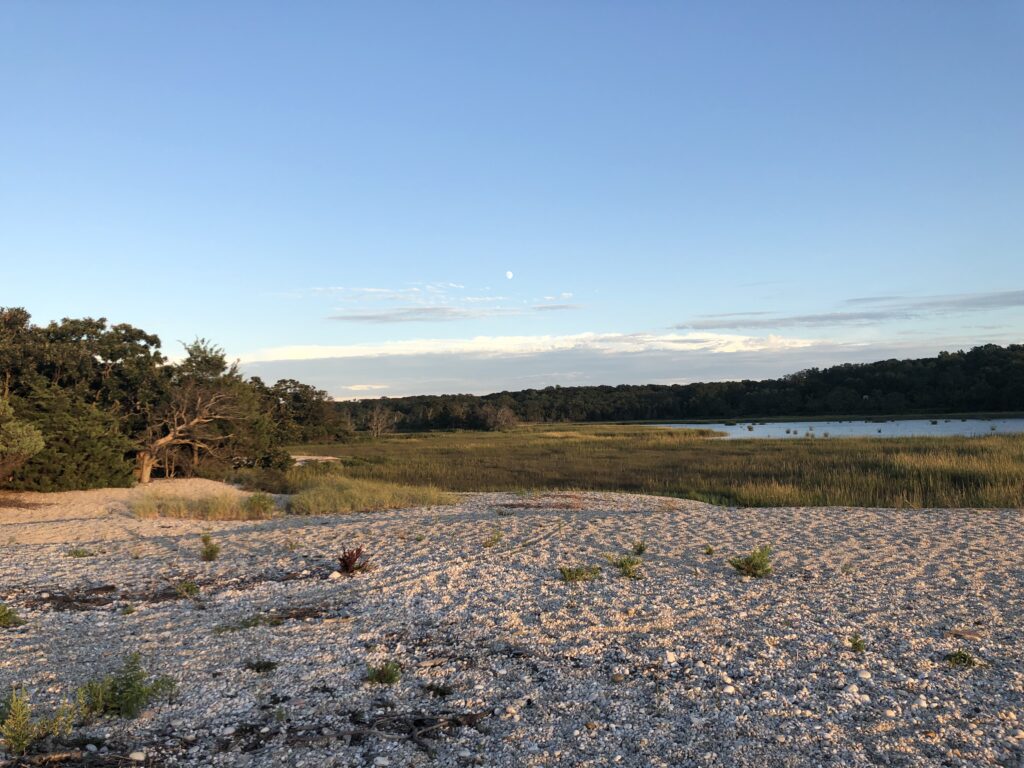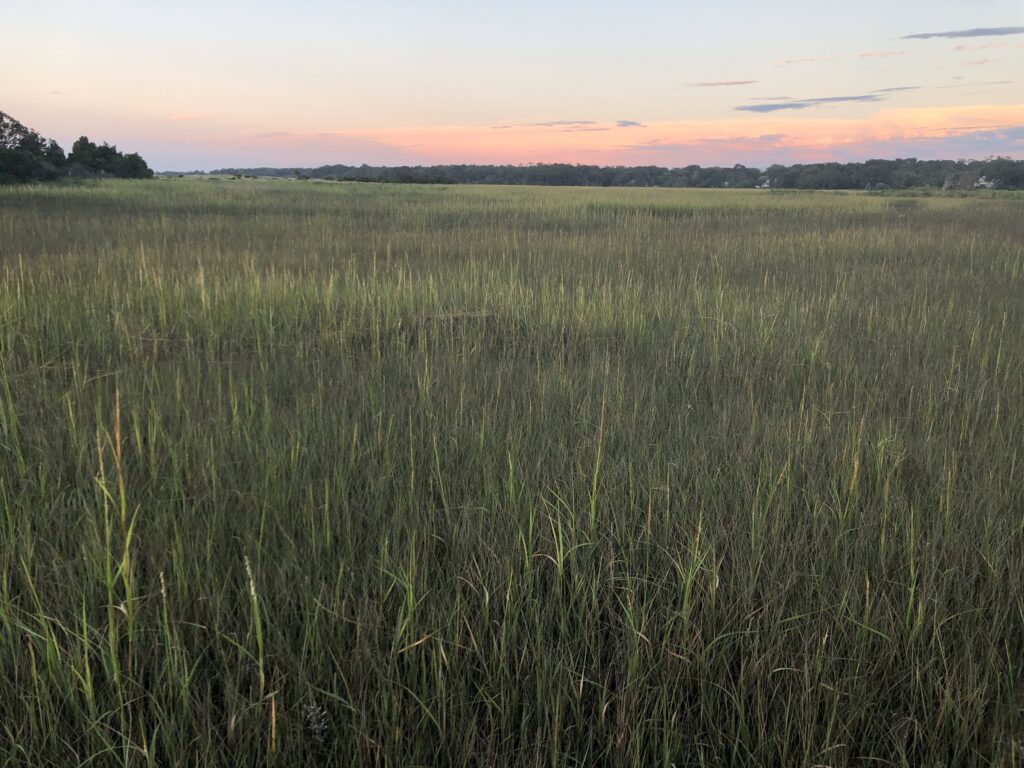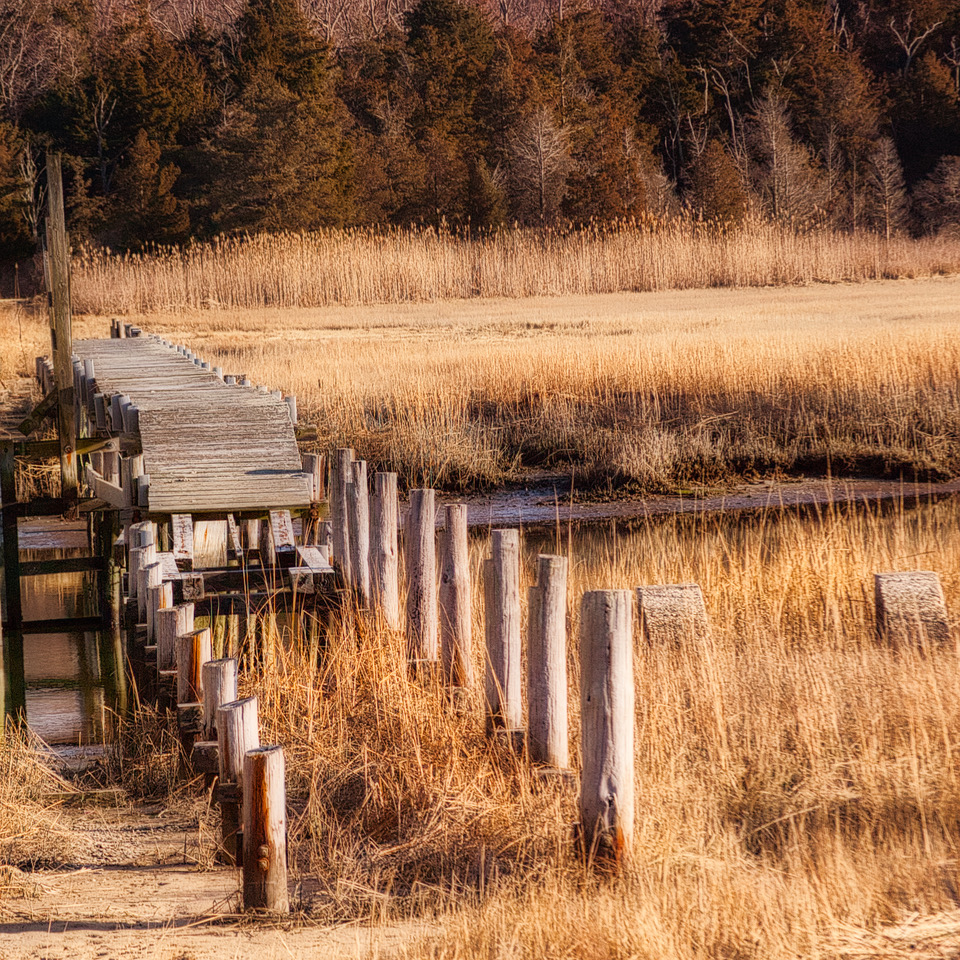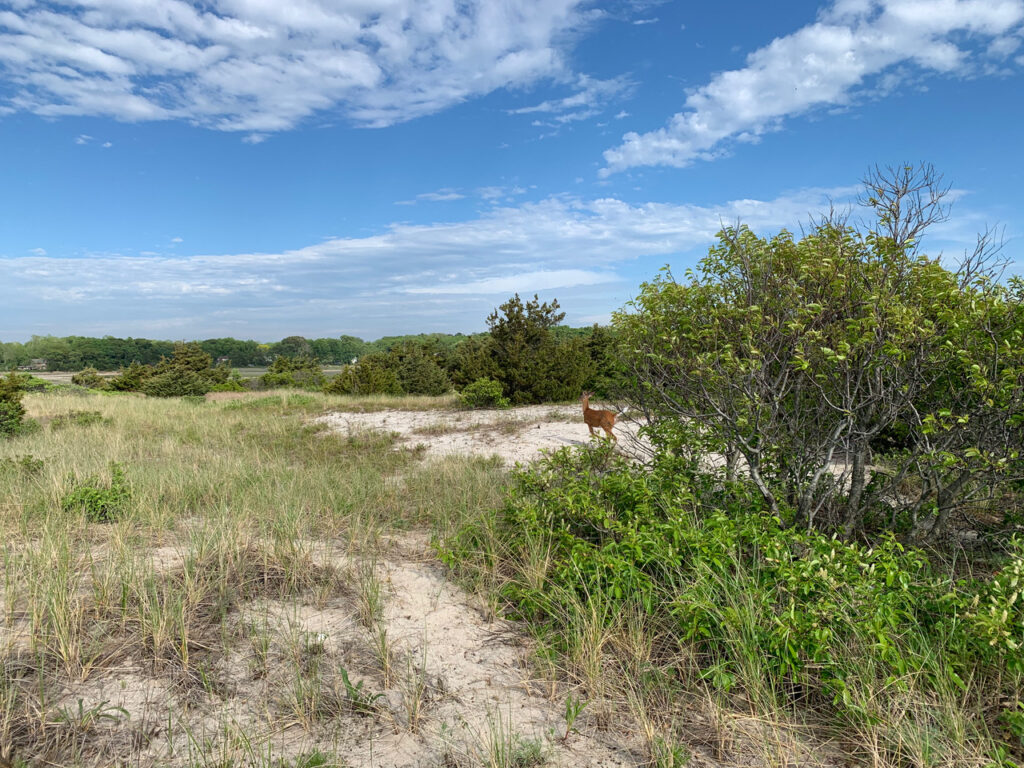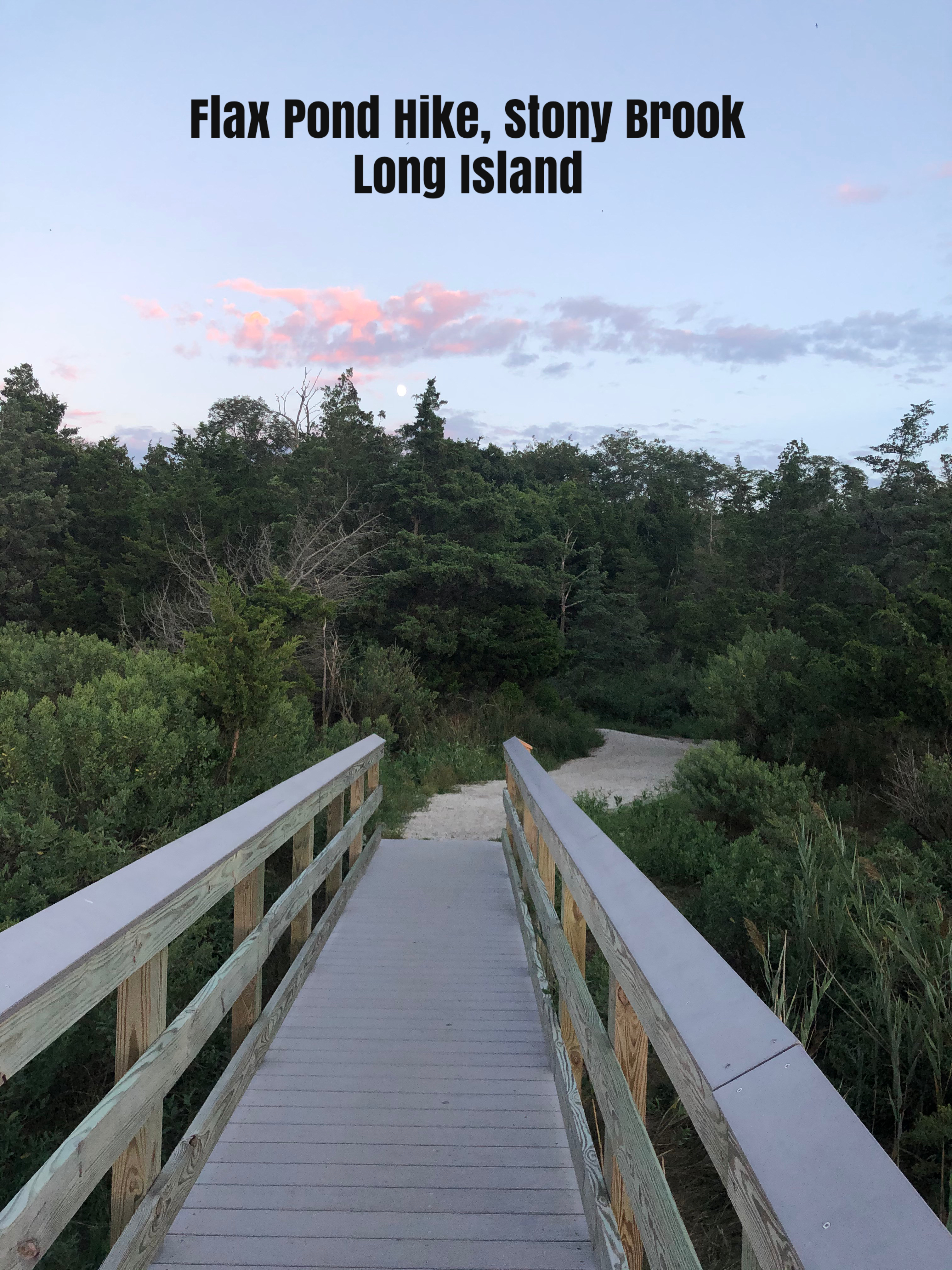Flax Pond Tidal Wetland Area was acquired by the state in 1966 under the joint jurisdiction of DEC and Stony Brook University. The 152-acre property includes the majority of Flax Pond and wetlands (128.2 acres) and adjacent upland (24 acres), as well as Childs Mansion and the Flax Pond Marine Lab. DEC manages the acreage for habitat protection and nature enjoyment by the public, while the university manages the Marine Lab primarily for research and education.
Prior to 1803, Flax Pond was freshwater formed from glaciers. The pond was originally called Fresh Pond, changed to Flax Pond from the fact that flax was grown here for making linen. The flax industry crashed in the late 1700s. In 1803 the inlet from the Long Island Sound was dug to try and encourage a new industry of oysters and clams, and the pond turned into a saltwater marsh. After WW2 inlet jetties were installed.
The property is an example of a mature maritime forest, including Hickory, Sassafras and American Holly. Wildlife includes deer, red fox and rabbits, and birds such as belted kingfisher, snowy egret, hawks and herons. You may also find fiddler crabs, blue crabs, winter flounder, bluefish and striped bass. Flax Pond is also a home to several species that are threatened and endangered at either the state or federal level, including piping plover, short-eared owl, pied-billed grebe, least tern, common tern and osprey. (DEC)
Parking for Flax Pond is found at the Flax Pond Marine Lab on Shore Road in Setauket (Old Field). You need a permit to park here. This can be done online HERE.
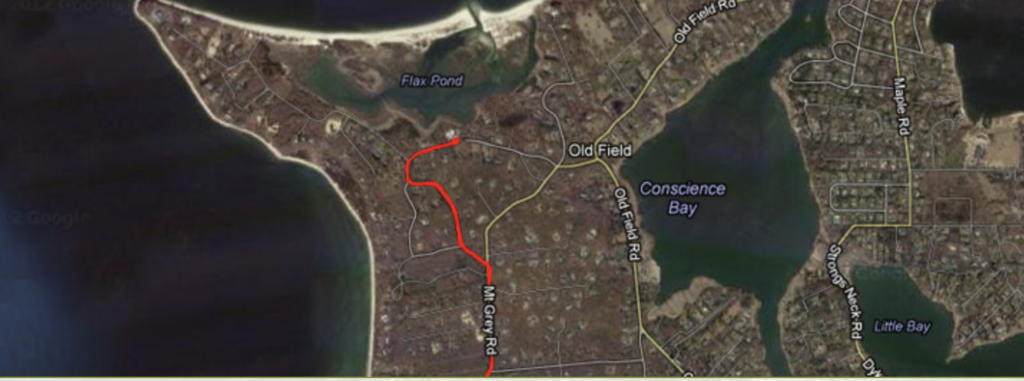
From the parking lot, walk about 1/4 mile on the path past the Childs Mansion to the bridge. You can cross Flax Pond using the looooong wooden bridge. You are also allowed to fish off this bridge. Locals catch winter flounder, snapper and stripped bass. Flax Pond is uncertified for shellfishing.
Once you get off the bridge the trails are not well marked. You are kind of on your own and you can only venture further from the bridge during low tide. We headed straight following the path and then towards the inlet with the jetties which is towards the right from the bridge. Walk along the inlet shoreline watching the tide rush water through. As kids my dad would anchor the boat near the start of the inlet during the incoming tide and we would ride the white water into Flax Pond. My own kids now enjoy the same.
Walk along the shore of the Long Island Sound. This north shore beach is obviously rocky but it seems even rockier than usual making it more difficult to walk. You will pass the “buoy tree”, a tree decorated with buoys. Once you see Flax Pond appear on your left again, I’m assuming you can head towards the bridge from here but we walked back down the beach towards the original trail we entered in on.
In total, the walk took us around 1.5 hours. We did not follow a specific trail and did not do a “loop” from the bridge so that tacked on some time. Make sure you time your walk with low tide!!
